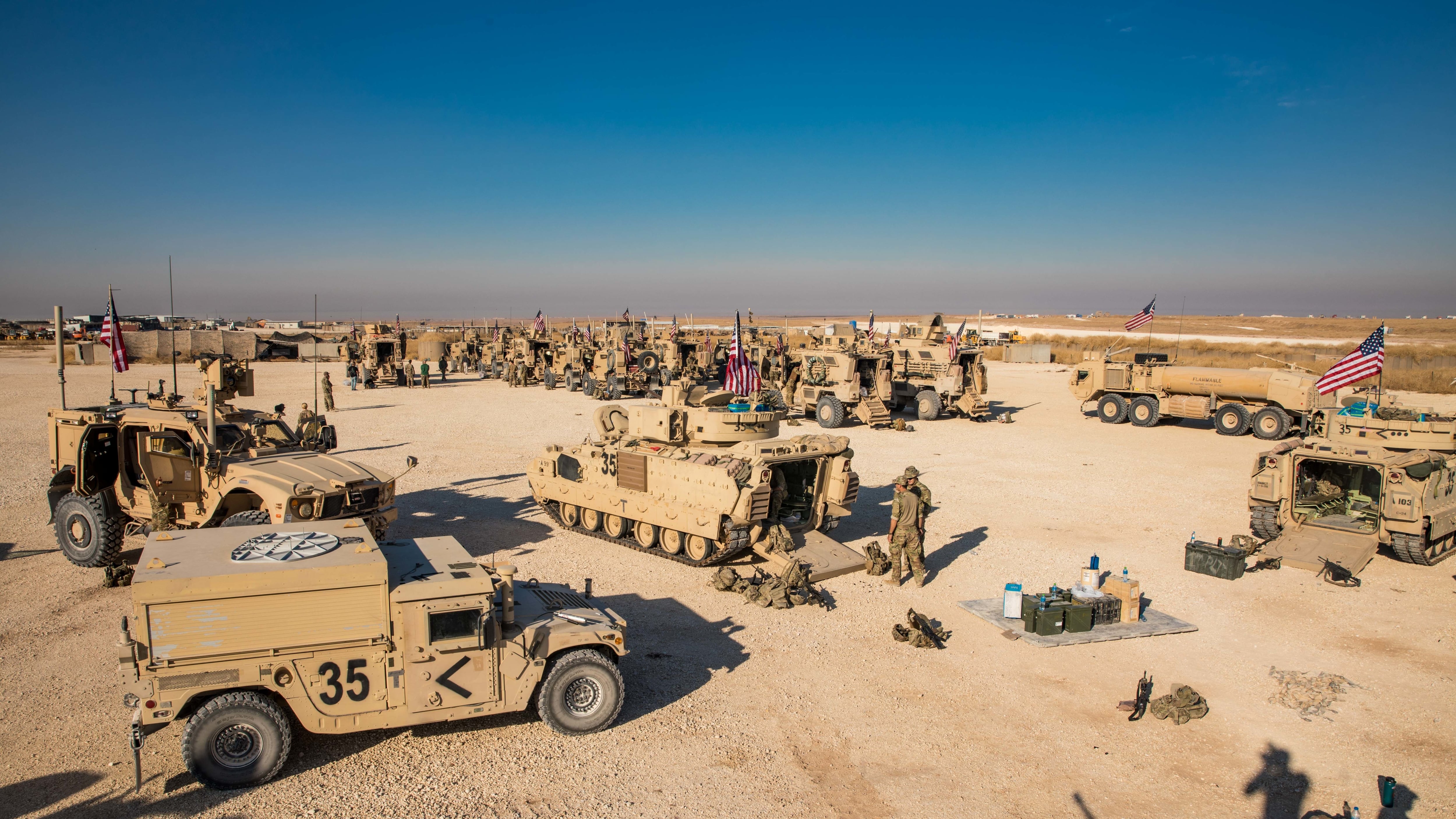WASHINGTON — The U.S. Army’s tactical network modernization team has started a prototyping effort to improve its armor brigades' connection to the network while on the move.
The capability, called Tactical Network Transport-On the Move, allows for improved connectivity in tactical environments and is currently being fielded to infantry and Stryker brigades. On-the-move tactical connectivity for armor brigade combat teams, which includes tanks and Bradley fighting vehicles, are critical because these formations must continually move to avoid becoming a target.
The effort to better equip armor brigades is another piece of the Army’s work delivering new tools to its tactical network every two years, known as Capability Sets, to increase connectivity and resiliency as it prepares for future wars against advanced adversaries. These tools are being developed through a partnership between the Army Network Cross-Functional Team and Program Executive Office Command, Control, Communications-Tactical.
“As the Army faces increasingly capable adversaries, on-the-move tactical network connectivity for armor formations is becoming critically important to enable more effective and less predictable armor offensive and defensive operations,” said Paul Mehney, PEO C3T communications director.
PEO C3T’s Project Manager Tactical Networks and the Network-CFT are working with the Army’s science and technology community, capability managers and industry, including SATCOM providers, radio vendors and application developers to integrate three design options as it works to inform network design for armor brigades. The Defense Department awarded a $29.9 million contract to General Dynamics Mission Systems for the pilot program on Sept. 30. Mehney said that the company will support integration, engineering and fielding services for the ABCT experimentation effort.
“Together this team-of-teams will implement a ‘buy, try, decide’ acquisition approach, emphasizing innovation to improve network connectivity, resiliency and protection for ABCTs,” Mehney said.
The specific needs of the armor brigades came from feedback from observer/controllers at the National Training Center. During these feedback events, Mehney told C4ISRNET, program managers learned that armor formation leaders wanted complex network systems to be left out of the fighting vehicles so they could focus on the fight. This feedback led to a decision to increase capability increases to command post vehicles that support armor formations.
He also said formation commanders told program managers they need more robust and resilient on-the-move voice communications. That way, “when a unit stops to set up the command post, voice and data links are already in place to execute the [command post] mission,” Mehney said.
The armor brigade combat team pilot efforts are funded by Congress' inclusion of a $71 million increase for the Army’s Tactical Network Technology Modernization In Service to support prototype efforts for on-the-move capabilities for armor formations.
Experimentation will take place in fiscal 2021 and 2022, he said, adding that the work will inform Capability Set ’23 armor brigade network design prototyping efforts. That work will lead to fielding in Capability Set ’25.
Mehney said that fielding to Stryker and infantry brigades will be completed by the end of fiscal 2021.
Andrew Eversden covers all things defense technology for C4ISRNET. He previously reported on federal IT and cybersecurity for Federal Times and Fifth Domain, and worked as a congressional reporting fellow for the Texas Tribune. He was also a Washington intern for the Durango Herald. Andrew is a graduate of American University.








